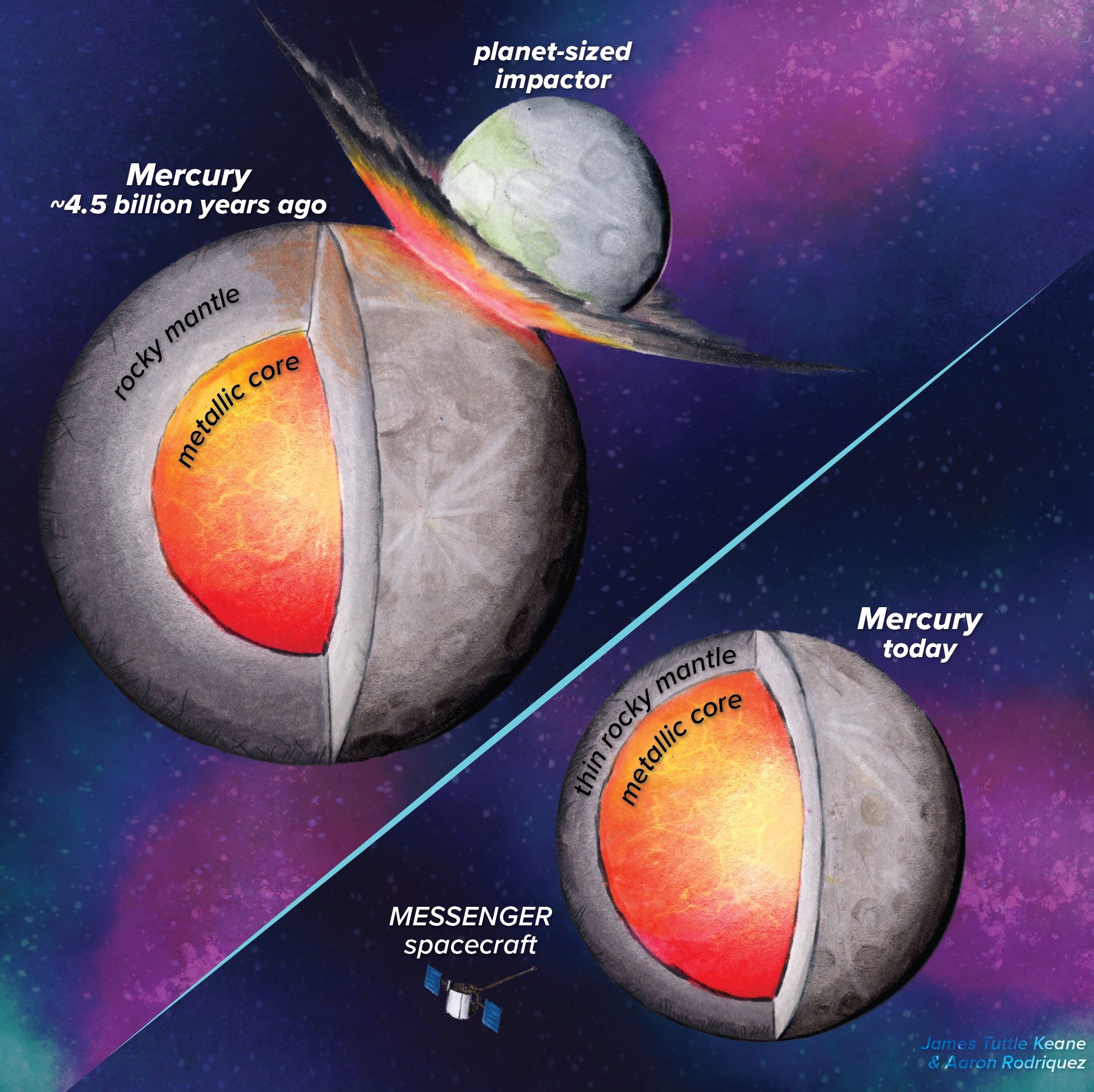Mercury
The Sun’s Nearest Neighbor
Mercury is the smallest planet in our solar system and completes its orbit in only 88 days. Over billions of years, the Sun’s gravity slowed Mercury’s rotation so that it is now locked in an orbital resonance, spinning around its axis three times for every two trips around the Sun. If you were standing on Mercury’s surface, the Sun would appear to be about 3 times larger than it looks to us on Earth. Mercury orbits the sun every 180 Earth days, which means that if you lived on Mercury, with every passing day you would be two years older!
A Song of Fire and Ice
The surface of Mercury is a harsh place. It is covered with craters formed by impacts of comets and asteroids over billions of years. Mercury has almost no atmosphere and daytime temperatures can reach a scorching 800 degrees Fahrenheit before plummeting to minus 300 degrees Fahrenheit during the long night. Despite scalding temperatures, MESSENGER confirmed the presence of ice deposits near Mercury’s poles inside deep craters that remain permanently shadowed from the Sun’s heat.
University of Arizona Legacy
LPL Professor Robert Strom was the Deputy Team Leader on the Imaging Experiment on Mariner 10, which took the first close-up images of Mercury in 1974. He and others at the University of Arizona’s Lunar and Planetary Laboratory contributed to the MESSENGER spacecraft, which orbited Mercury from 2011 to 2015 to study the half of the surface not captured by Mariner 10.
QUICK FACTS
| MASS: | 3.2x1023 kg | 5.6% that of Earth |
| DIAMETER: | 4,879 km | 38% that of Earth |
| SURFACE GRAVITY: | 3.72 m/s2 | 38% that of Earth |
| AVG. SURFACE TEMPERATURE: | -290° to 800° F | -180° to 430° C |
| AVG. DISTANCE TO SUN: | 41 million miles | 0.39 au |


